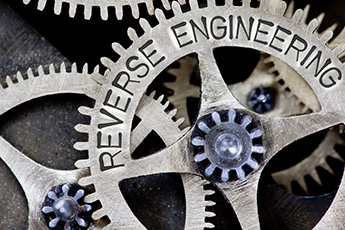Most recipes for baked goods include flour and sugar. There’s also usually a fat, like oil or butter. Eggs help hold the ingredients together, and then there might be a leavening agent such as baking powder or baking soda. Getting the amounts right can have a huge impact on the taste and form of what you’re baking, and even then, there are still some variables. Finding the right ingredients, ratios, and recipe for a diverse, equitable, and inclusive (DEI) workplace can be just as complex, but vital for your community financial institution (CFI). Nurturing these elements can increase innovation, attract talent and customers, create a culture of trust, help retain employees, and empower people to reach their full potential. What’s more, DEI can help grow a CFI’s bottom line. According to a 2022 McKinsey report, businesses with DEI programs that encouraged a greater ethnic and cultural variety among employees were 36% more likely to have above-average profitability than companies that lacked similar DEI initiatives. Companies that deliberately hired both women and men outperformed peers with less gender diversity by 48%. What To MeasureSo, what exactly should you be measuring and tracking for your DEI efforts? Consider what you hope each of these initiatives will do, and what will have the greatest impact on your current and potential employees.Your list might look something like this:
- Hiring practices. What proportion of the people you’ve interviewed for job openings in the past year were not like the majority group in terms of their gender or cultural background? How many of those candidates did your CFI hire?
- Retention strategies. Diverse hiring practices are well and good, but they’re not as effective if your CFI is not retaining the talent it is hiring. Review your company’s employee retention averages and pay close attention to the turnover rate among employees from underrepresented groups.
- Advancement opportunities. You might also consider what steps you’ve taken to increase the chances that people who are different than your majority have to advance their careers. Career mobility is a key factor for an equitable work environment.
- Employee engagement. Engaged employees are employees who feel included, comfortable, and supported. Inclusion scores can help you assess how inclusive your work environment really is. Provide employee resource groups to both encourage inclusivity and opportunities to build community within your organization and gain insight on how effective they are.
How To Collect the Insights You NeedYour measurements are tools that help you look at your efforts around DEI. They aren’t the whole picture, but they do give you a valuable vantage point as you work to create a corporate culture where everyone can thrive. Here are a few ways to collect the data you need in order to assess your DEI program’s effectiveness:
- Diversity index. A diversity index is a Key Performance Indicator (KPI) metric that will help you assess whether or not your hiring practices reach the level of diversity you are striving for. By obtaining these analytics, you can see if your hiring practices are meeting your CFI’s DEI goals.
- Equity ratios. Use equity ratios to evaluate equal career advancement opportunities and fair pay practices. Track representation among your leadership teams and the rate of promotions, and this will tell you how equitable your organization really is when it comes to equal pay and advancement.
- Inclusion index. Gather feedback directly from your employees by using an inclusion index, which can come in the form of employee opinion surveys. Be thoughtful and thorough with the questions you come up with to gauge how your employees really feel about your organization’s inclusiveness and sense of equity and belonging. Break down your results by the underrepresented groups that DEI aims to lift up so that you can see who feels supported and where you might have gaps to address.
Diversity, equity, and inclusion are big topics, and not everything about them can be measured. That said, breaking them down into individual efforts and tracking the logical results of those efforts can help a CFI move the needle in the right direction.




